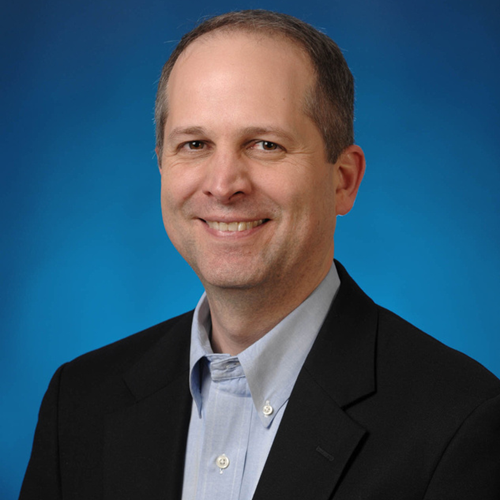Gary Boomer is a visionary and strategist of Boomer Consulting, Inc., an organization that provides consulting services and peer communities to leading accounting firms. Gary is recognized in the accounting profession as the leading authority on technology and firm management. As a consultant and speaker around the globe on management and technology related topics, Gary’s expertise has led me to refer to him as the Pied Piper of the top 100 firms in the country.
Gary and I had the opportunity to speak about leadership and advisory services on the Scaling New Heights Podcast. Here is a transcript of our conversation.
Gary: We are in a complex business, and that is why leadership comes back to it. You don’t want to put the weakest link in the firm into advisory services, or you’re probably not going to succeed. You want someone who is strong and entrepreneurial.
Joe: I couldn't agree more, Gary. I want to call attention to a very formal process that you’ve established for larger-sized firms called Technology Circles. Can you tell us a little bit more about Technology Circles?
Gary: Our original Technology Circle began in 1999, and it was -to bridge the gap between technology and management, focused on internal technology. But now we have a variety of circles that focus on different areas. So, they have a slightly different focus. The people who participate in that learn from each other in a controlled environment. Because often in the firm, if you start saying, “We’re going to test something,” everyone assumes there’s a change coming. Most innovation honestly starts as a bad idea, especially with the incumbent. To get over that bad idea, you have to do it in silence, or do it with your peers. Having access to others who have already done this can save your firm a lot of time.
These are groups similar to your groups, Joe – Woodard Groups and Woodard Alliance - the smaller firms for the most part, but if you participate in these groups, you are going to get far more out of the groups than the cost. It gives you some time to think, rather than just be focusing on charge hours all the time.
Joe: You're absolutely right. It's an up periscope to give you some perspective on what's happening with your peers in a larger industry. I have one more question and I want to focus on something I've heard you call the “Drink Your Own Champagne” strategy. What do you mean by that, Gary?
Gary: Accounting firms have always felt like they’re different from their clients, because they have had practice management where they’ve captured their time and billed through that program. But I would say that any accounting firm outside the Big Four is probably the same as any other small business. In fact, banks and other industries would view the accounting profession mostly as small businesses. Even if you go down to the top 100, that’s about $35 million in revenue at the bottom and the other 45,000 CPA firms out there and probably another 45,000 – 50,000 advisory firms are really just small businesses.
If you use the tools internally that you are recommending to your clients, you have a lot more influence and a lot more knowledge, and you can help the clients. We use the tools internally that we recommend to the accounting firms out there. We don’t do tax returns, but we do have workflow, we have document management requirements, we have payroll, we have performance, we have vendors to pay. I think that is what I mean by “drink your own champagne.”
The first time I heard this, it was from Bill Gates and it was, “You have to eat your own dog food.” Well, champagne tastes better to me than dog food, so that is why we are on the champagne kick right now.
Joe: That's fantastic. I do like that better, because it really should be champagne, not dog food.
Let me sum up what Gary and I talked about here. He started by saying that leadership is critical. As an accountant, if you haven't developed and honed your own leadership skills, you now have two reasons to do it. One - because of your internal team, and two - because of your client.
Then we moved into some challenges. Why haven’t more firms embraced an advisory services model? We talked about challenges like pricing and about the knowledge gap. I think, and Gary focused on this too, that our obsession with efficiency as a measurement point rather than effectiveness is also a challenge to embracing the advisory services model. We are so focused on production, on making money, on internal metrics, that we forget to layer that with some of the effective metrics that are client-centric.
We talked about the obstacle of tools and about a wide-range of tools, including collaborative tools that small firms need to embrace, and that maybe some of the larger firms have embraced more quickly. The larger firms perhaps had a greater and more compelling need for that. - The smaller firms are more proactive. On top of that tool set, we talked about how the small firms could partner with larger firms using that as a resource or a form of a tool so that they can offer services that are outside the scope, the capabilities, or the scale of what their firm might be able to embrace.
If we can increase our knowledge and our intellectual capital, if small firms would start collaborating more proactively with large firms, if we could embrace the right tools and hone our leadership skills, we can start drinking our own champagne.
Click here to return to Part 2
.png?width=150&height=63&name=TWRlogo-regmark_blueblack%20(1).png)
.png)

-Mar-02-2021-04-00-51-85-AM.jpg)








Do you have questions about this article? Email us and let us know > info@woodard.com
Comments: